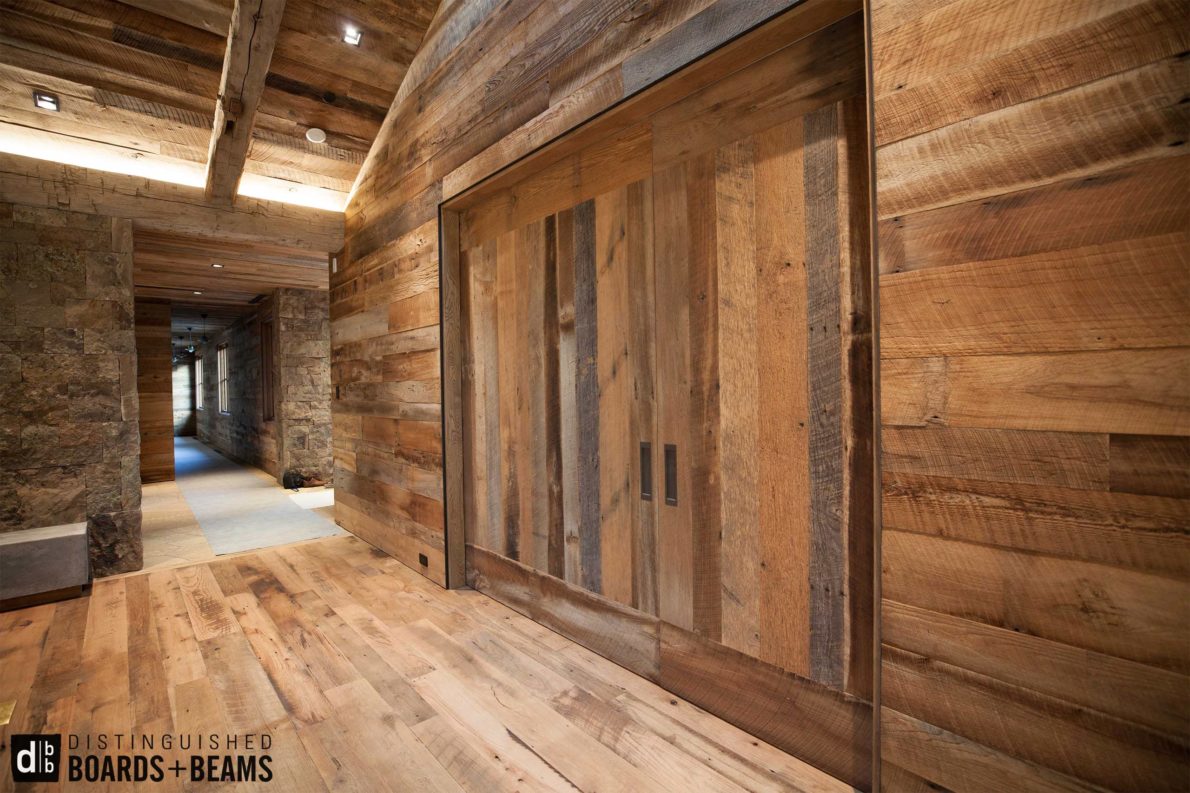Each piece of reclaimed wood that we come across at Distinguished Boards and Beams has its own unique origin story in virgin North American forests. Our wood is sourced from reclaimed 18th, 19th, and early-20th century structures throughout the United States and Canada. From massive Douglas fir timbers that originally held up factories in the Northwest to hand hewn logs crafted from old growth chestnut trees that used to dominate Eastern forests before they were nearly driven into extinction. Every day, we continue to see reclaimed wood that is as fascinating as it is rare.
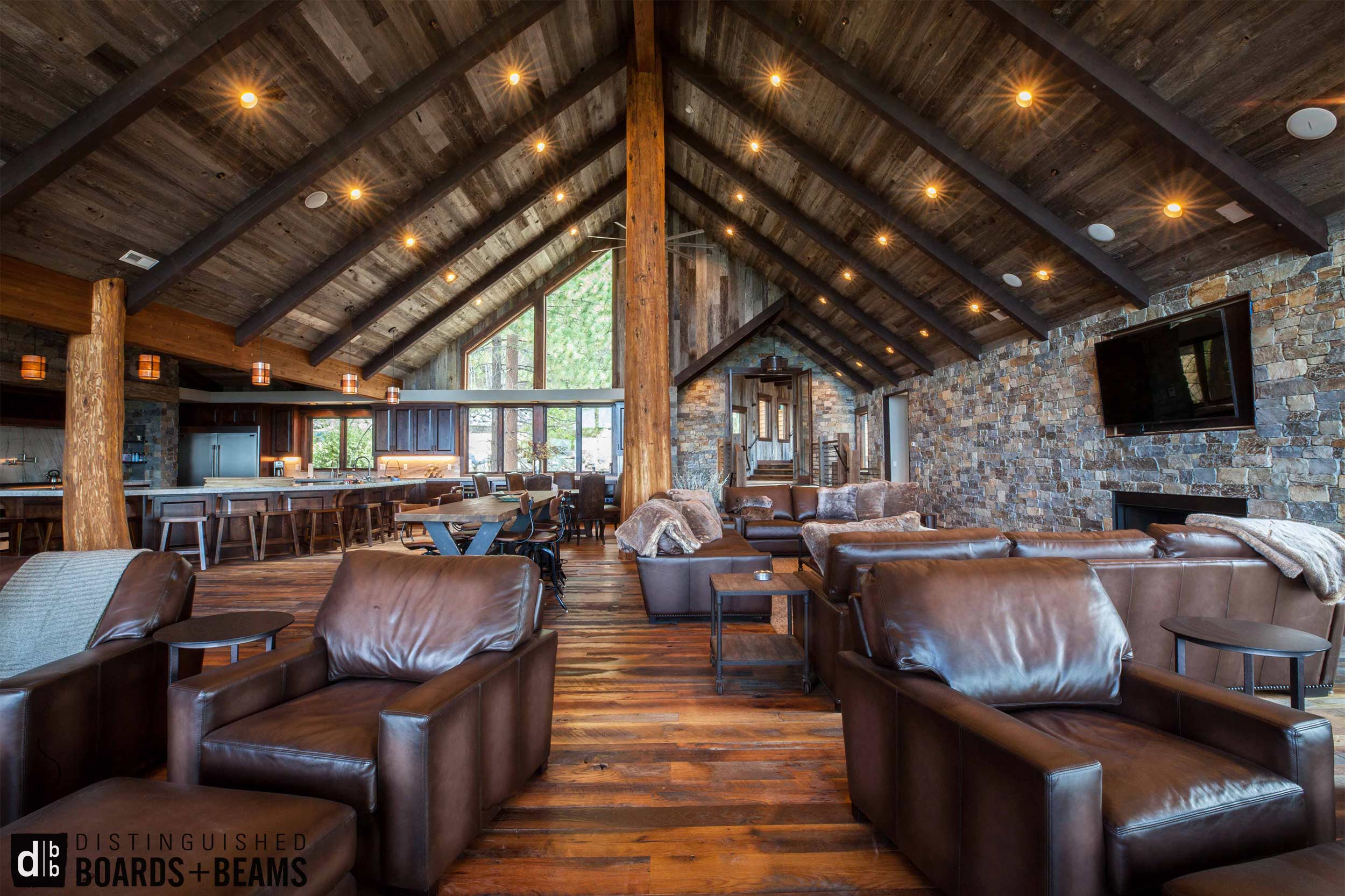
Reclaimed Wood Species Characteristics
The decades or centuries old growth timbers and boards spend naturally air drying and weathering gives authentic reclaimed wood examples their unique rustic aesthetics, along with superior stability and strength. A primary draw for architects, contractors, and homeowners alike is the reality that species and dimensions readily available 100-200 years ago are simply not easy to come by on the modern lumber market. For example, acquiring old growth Douglas fir in the 6” by 12” dimensions that were commonly used 100 years ago are expensive and rare to come by, if at all, from today’s lumber mills. This is due to a number of factors, including present availability or laws preventing the harvesting of existing old growth trees.
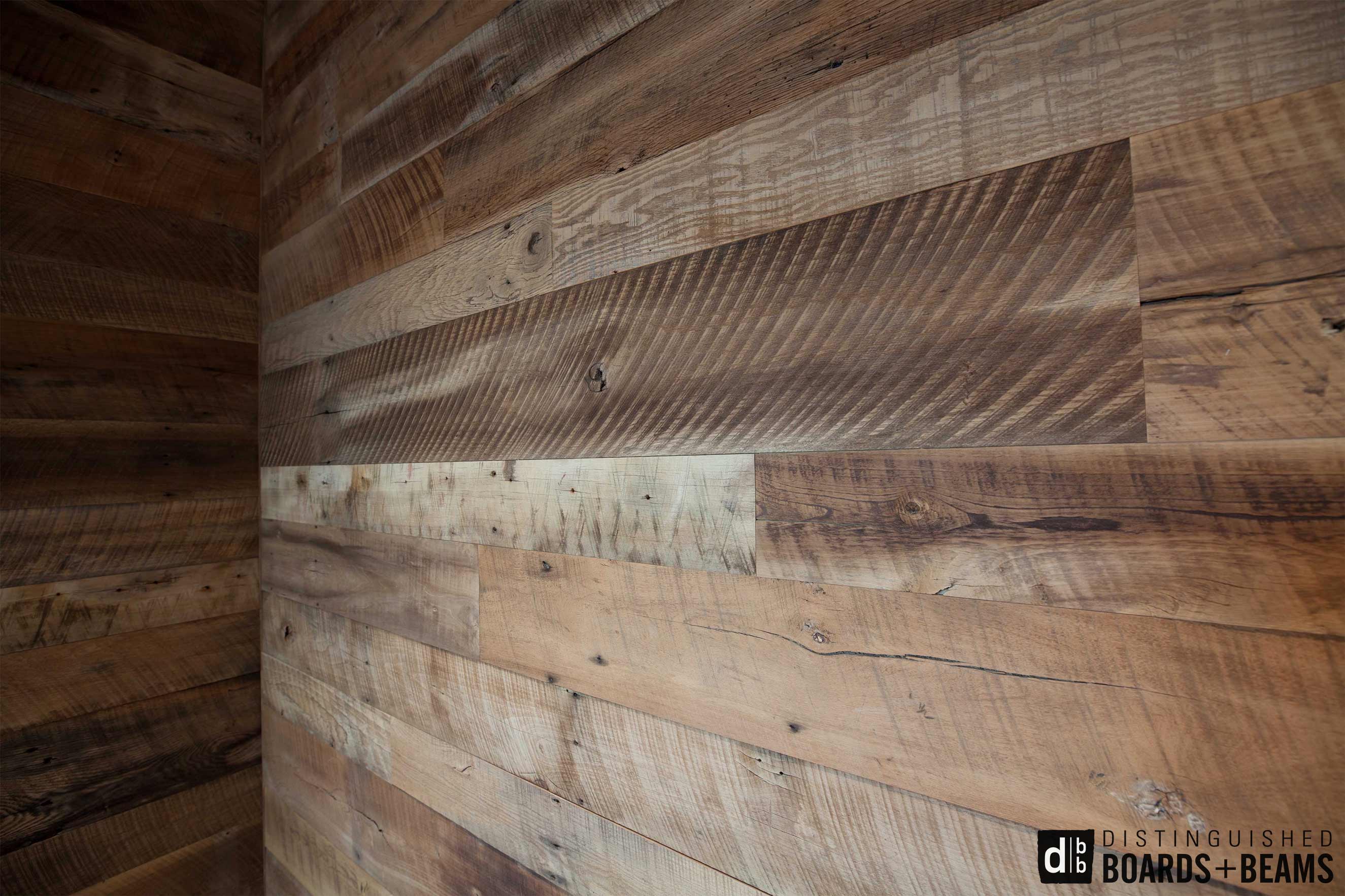
Species Are a Reflection of Local Historic Forests
Historic structures were often built from more than one tree species, depending on timber availability and its intended purpose in the construction. The abundance of virgin old growth forests in North America during the times that our reclaimed barn wood, timbers, logs, and flooring were milled, allowed for discerning loggers and carpenters to select the cream of the crop from their local tree varieties. In effect, the diversity of wood found in historic buildings is usually directly related to the diversity of the local historic forests they were built from. Using local lumber saved much time and money for the vast majority that could not afford the expensive pre-railroad lumber transportation costs. Sawmills were one of the first industries to be established in any newly settled area. As sawmill technology advanced, settlers were also able to build or buy their own small mills and cut their own lumber. By the 1900s, the cost of transportation from the West Coast to the East Coast had become incredibly low. This allowed for more mixing of western species like Douglas fir in the Midwest and the East Coast states.
Identifying Heritage Reclaimed Wood Species Can Be Challenging
Identifying specific reclaimed wood species can be challenging even for the experienced eye, if the original aged patina is still intact. Looking at the grain characteristics, coloring, and growth ring density aids the process and can usually determine if the piece is a hardwood or softwood. In general, softwoods have noticeably thicker rings than hardwoods due to faster growth rates. There are times when the species is not definitively revealed until the original patina is planed down. It is also important to keep in mind that most heritage reclaimed wood products are from old growth trees and will therefore have characteristics that may not be seen in a species younger generation that was, for example, grown rapidly on a tree plantation with open sunlight. Having solid understandings of common tree species used in historic North American construction and their defining characteristics can narrow down the process of correctly identifying reclaimed treasures from North America’s architectural heritage.

Why Choose Reclaimed Wood?
Before steel beams, concrete, and tempered glass were widely available, wood was the primary building material, as it was strong, relatively inexpensive, and abundant. Many of these woods that were once plentiful are now only available in large quantities through reclamation. Antique barns serve as one of the most common sources for reclaimed wood in North America. However, obsolete commercial buildings such as factories and warehouses are also great sources for reclaimed material, especially large timbers used in original timber-frame construction. The following desirable traits of reclaimed wood are commonly cited for its preferred use when compared to newly cut wood:
- Sustainability: Old timber is sourced from structures that are no longer essential to agrarian lifestyles, whereas newly cut wood comes from tree plantations created specifically for mass producing lumber products which may or may not be managed in a sustainable manner.
- Strength, Stability, Durability: Reclaimed wood will typically be stronger than new timber. Experts suggest that the strength, stability and durability of older trees is directly tied to the lack of air pollution during their 200 to 400 years of growth. This stability is increased by the reality that wood reclaimed from historic structures has spend decades or even centuries slowly air drying.
- Character: Reclaimed barn wood is sought after for its visual appeal and unique character gained through lifetimes spent holding up and adorning historic structures. No two pieces are the same. This character is enhanced by the old growth nature of most reclaimed pieces, with their tight growth rings and handsome grain patterns. When incorporated into new architectural projects, reclaimed pieces create a texture and look that cannot be replicated by cookie cutter lumber. Freshly cut or mass produced pieces will have a very uniform look and less character in their natural grain patterns.
- Size: Since reclaimed wood examples were from a time when the tallest, finest trees were used in construction projects, the timbers are readily available in much larger sizes than can be found at lumber mills today. Laws and protections in place prohibiting the harvesting of old growth trees make reclaimed wood one of the only remaining sources for sustainable, beautiful pieces of old growth wood.
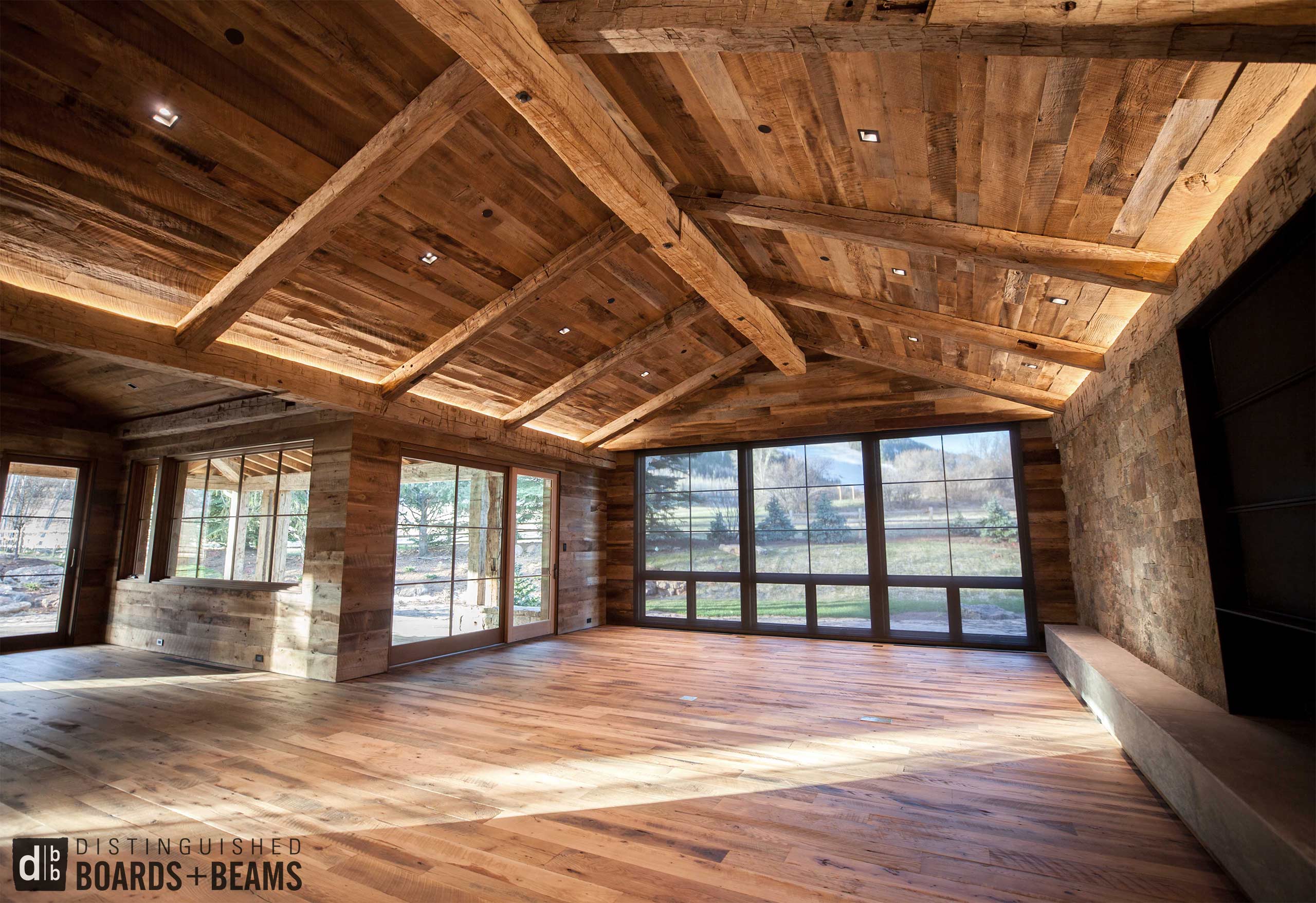
Hardwoods Versus Softwoods
Determining whether a piece of reclaimed wood is a hardwood or softwood is a good starting place for species identification. In general, hardwoods are noticeably heavier in terms of weight compared to softwoods and have very tight grain patterns. Softwoods have some easily identifiable characteristics including lighter weight, wider growth rings, visible sapping, and the ability to fairly easily press a nail into an end cut. It is important to keep in mind that softwoods and hardwoods are not classified on actual hardness but on their seed structure. For example, balsa wood, know for its lightweight nature, is classified as a hardwood. However, most hardwoods found in reclaimed building examples display characteristics commonly associated them, including greater density and tighter growth rings when compared to softwoods.
To do more than best-guess the identity of a reclaimed wood species, the process involves knowledge of individual species characteristics along with examining grain, texture, color, and markings. Identification of the wood’s species can be helpful in understanding its inherent properties such as strength, durability, stability and flexibility. Additionally, understanding the history of the material’s use can be helpful in order to be able to assess its suitability for reuse.
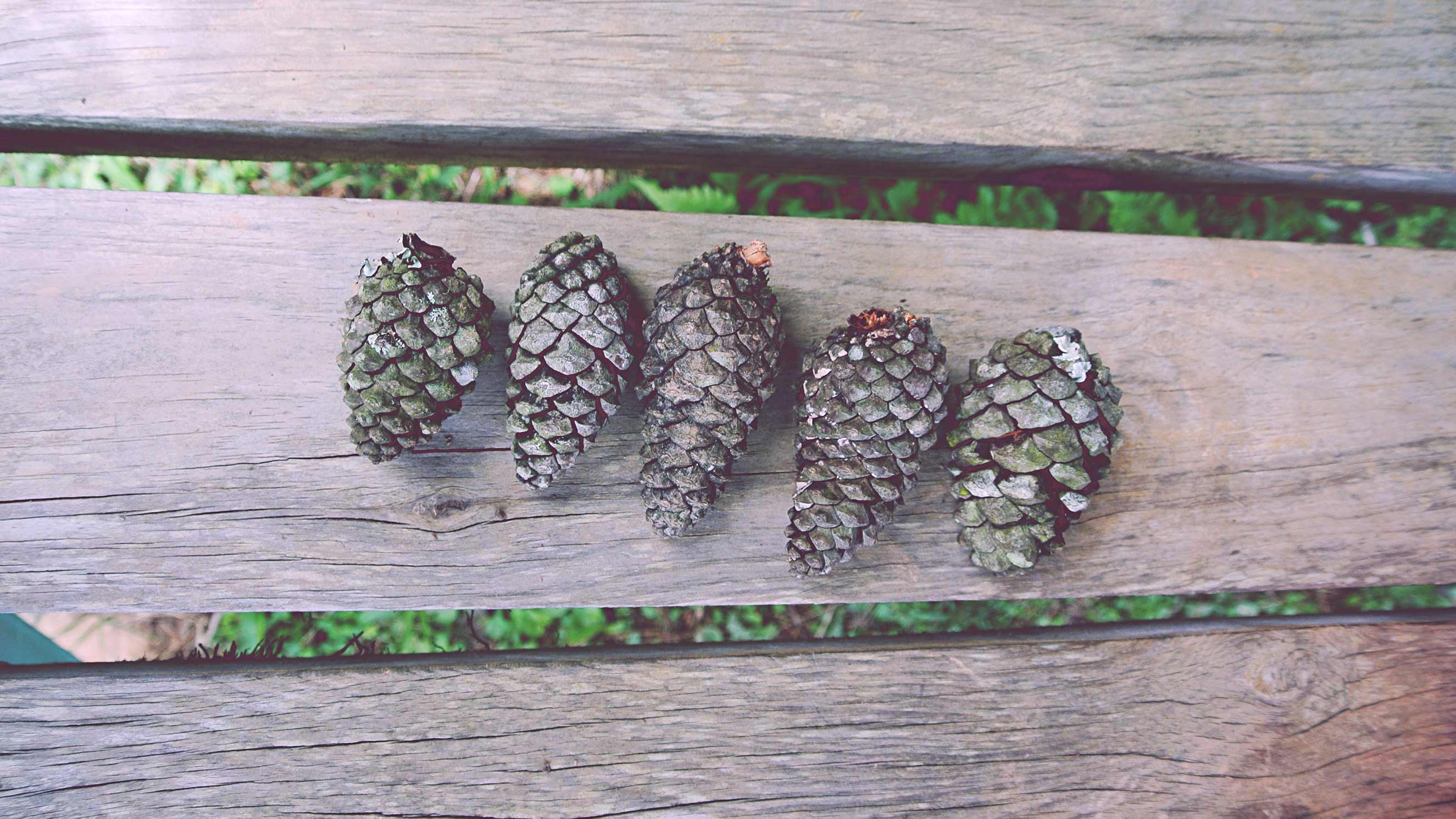
Hardwoods
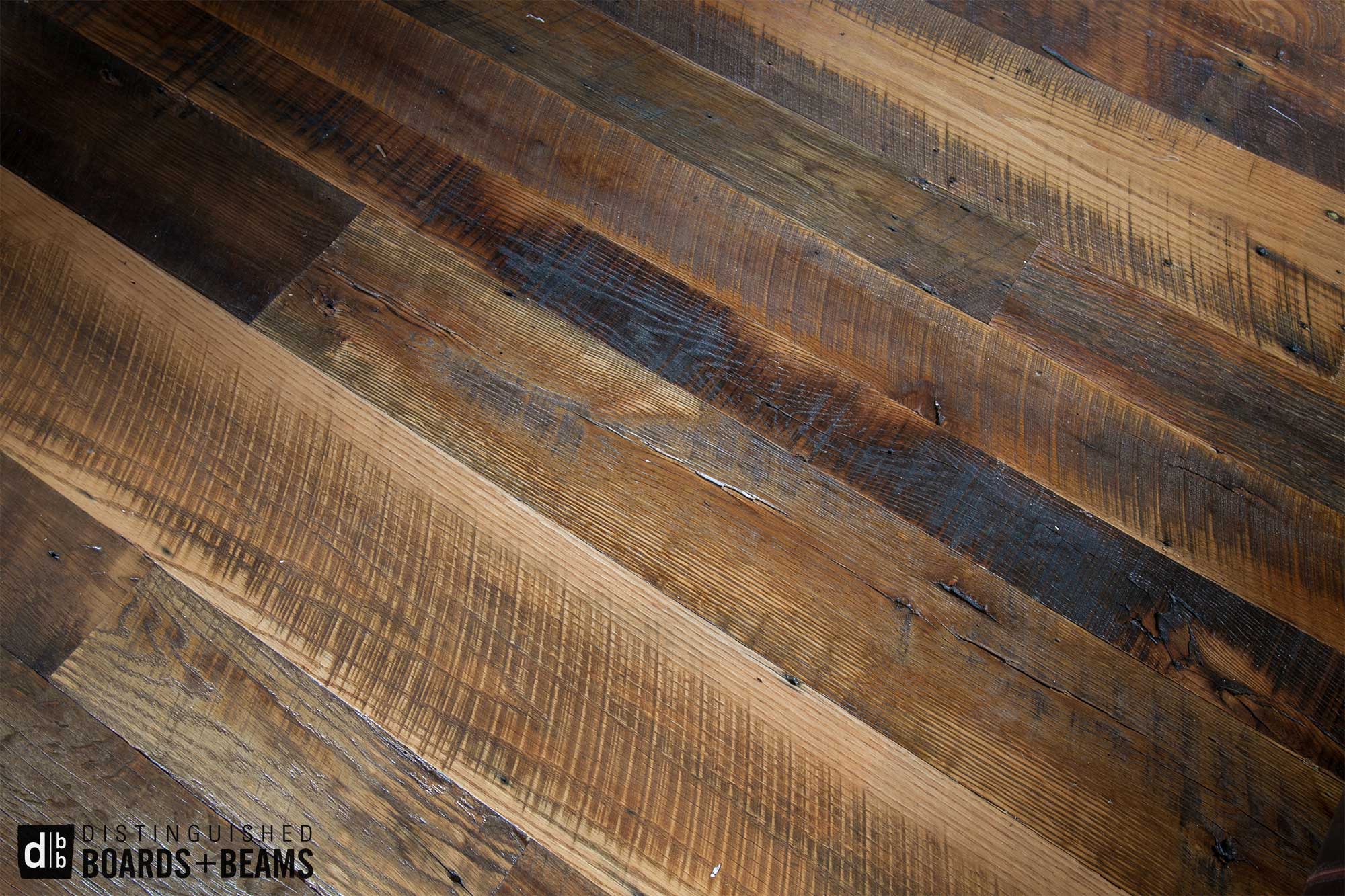
Oak: Genus Quercus
Oak is far and away the most requested reclaimed hardwood and is prevalent in both heavy timbers and in siding planks. Timbers come in hand hewn, original rough sawn, and original smooth planed surface textures. Oak timbers can also be slabbed and then planed into beautiful looking flooring. Oak barn boards are used in both exterior and interior applications and furniture making. These boards also produce exceptional flooring material when professionally milled.
Timbers: Hand hewn oak timbers are both visibly appealing and durable. Home owners cherish the rich light brown tones, hand hewn markings, and mortise pockets that remind them of the tradition of craftsmen ship that went into the shaping each beam.
Siding: Reclaimed oak siding is extremely versatile, as it can be applied for both interior and exterior uses in a numbers ways. As exterior siding, it has the attributes necessary to withstand the elements while continuing to retain its unique aesthetic character. Interior uses can also vary from accent features to entire walls clad oak barn wood siding. Milled ceiling material and wall treatment from oak siding has become increasingly popular, along with its use in cabinetry, trim, and furniture making.
Flooring: Oak hardwood flooring is long lasting and provides a timeless look. Blending white and red oak results in subtle but interest color variations. With reclaimed material, minor knots and nail holes at character to a floor that is unmatched by the mass production. Oak timbers can be slabbed and milled into specialty flooring, such as red or white oak.
High quality oak is commonly found in barns throughout the East Coast and the Midwest. Although antique barns constructed out of hardwoods will contain may different types of tree species, including elm, ash, beech, and maple, oak is generally the most prevalent. It is found within the timber frame of the structure as well as within the barn’s siding, roofing boards, and flooring. Oak is strong, hard and particularly resistant to insect and fungal attack due to its high tannin content. It is appreciated for handsome grain patterns and extremely tight growth rings, particularly when quarter-sawn.
Oak is a tree or shrub with approximately 600 species. It is native to the Northern Hemisphere and includes deciduous and evergreen species in Asia and the Americas. The U.S. contains the largest number of oak species, with approximately 90. Early U.S. settlers recognized oak from experience with its European subspecies. Soon red, white, black, scarlet, willow, post and pin oak varieties were being cut and transformed into material used to construct barns.
Identifying White Versus Red Oak
The two most common U.S. varieties are White Oak and Northern Red Oak. Distinguishing between white and red oak is difficult. Eric Meier wrote a very detailed and helpful post on The Wood Database that is worth reviewing. Although similar in appearance, it is possible to tell if oak is red or white by cutting a thin slice off the end of an oak log and holding it up to the light. If specks of light cannot be seen through it then it is likely to be white oak. Exposed to the open air over the years, the oxidization of the wood grain of White oak often imparts golden brown accents. Its colors typically vary between creamy white to medium brown. It was a common choice by early settlers as a utilitarian hardwood suitable for uses where strength and hardness was required, such as house and barn framing, barn threshing floors and other types of timber framing. It was also used for flooring in minor rooms in colonial America instead of more formal, finer-grained White pine and Heart pine floors.
Elm: Genus Ulmus
Elm trees spread over most of the Northern Hemisphere, inhabiting regions of North America, Eurasia, and Indonesia. Historically, they reached great sizes and ages. Since its identification in 1921, most mature elms of European or North American origin have died from Dutch elm disease, which is caused by a fungus spread by the elm bark beetle. In response, some disease-resistant cultivars have been developed. To learn more about Dutch elm disease, please see the American Phytopathological Society's article on the subject.
To some, reclaimed elm is viewed as a secondary construction alternative to oak, maple, and beech because of the common appearance of worm holes. However, elm is extremely versatile due to its unique characteristics. It is valued for its rapid growth, strength, flexibility, and resistance to wind damage. Because elm is not prone to splintering, it is a fine choice for bar, counter, and table tops. Additionally, it is great for benches and chairs. Elm also adds exceptional character to a hardwood floor that is comprised of a mix of hardwoods.
Hollowed trunks were widely used as water pipes during the medieval period in Europe due to their decay resistance and long, straight trunks. Historically, Elm was also used for bridge piers, including the Roman versions of London Bridge. However, this resistance to decay in water does not extend to ground contact.
American Elm is present in Colorado and Texas. Trees in areas unaffected by Dutch Elm disease can live for several hundred years. The combination of rapid growth, adaptation to a broad range of climates and soils, strength, resistance to wind damage, and vase-like growth habits that requires minimal pruning make elm trees extremely hardy. They are capable of attaining a great size in just a few centuries, especially when grown in open sun.
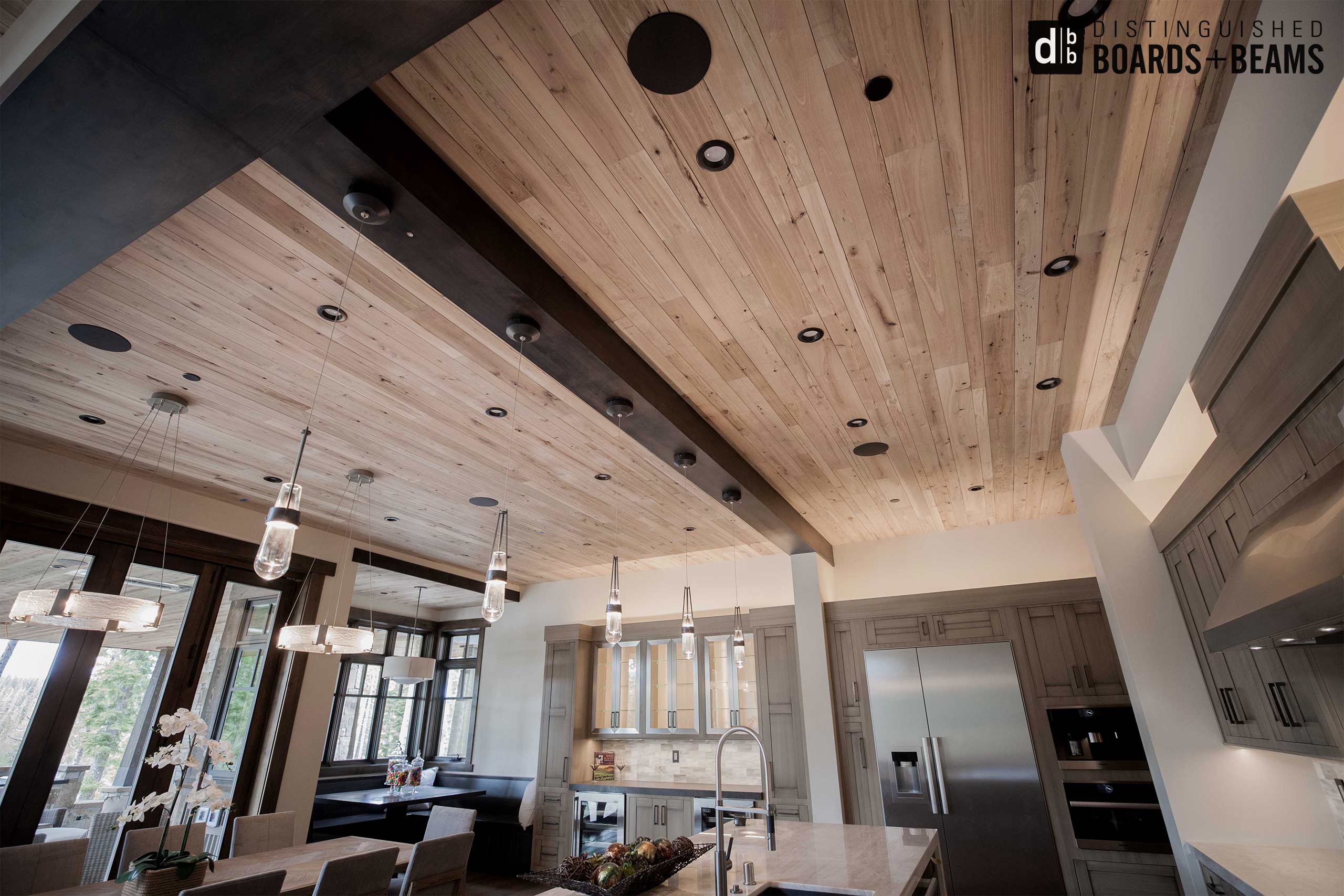
Beech: Genus Fagus
Beech is a stout tree found in North America, Asia, and Europe. They are able to live in a variety of soil types but struggle with growing in polluted urban areas. Mature trees can be greater than 100 feet in height and cast dense shade coverage. In North America, beech and sugar maple trees join to co-dominate what are know as a beech-maple climax forests, where their thick hardwood canopies shape the potential for other plant life in the forest. This forest type was by far the most common in the Northeastern United States when it was first settled by Europeans. Thus, it is very common to find a combination of beech and maple in structures reclaimed from areas once dominated by beech-maple climax forests.
Reclaimed Uses
Reclaimed beech is popular for furniture and toy making, because it can be a more durable alternative to other light colored softwoods, such as pine. Although it takes some practice to learn how to work with, resulting furniture and toys can be beautiful, durable, and light colored. With its light tones and wavy grain, beech can provide interesting contrast to a mixed hardwood floor. Beech can be found in hand hewn beams and barn siding planks. It is sometimes confused as oak and is often viewed as an alternative to Maple. Since beech is naturally very absorbent it is not recommended for use outdoors or in very humid areas.
Maple: Acer Saccharum
Maple, or sugar maple trees are prevalent in barns in the Northeastern portion of the United States as well as around the Great Lakes. Maple is a favored choice for flooring due to its handsome grain patterns and durability. It is often found in old basketball courts and bowling alleys. Reclaimed mixed hardwood flooring often includes maple pieces milled from historic barn boards, ranging in color from light honey or ivory to tawny blonde and gold. For example, touches of curly maple planks within a mixed hardwood floor can add exceptional beauty. Maple dries more slowly compared to other hard woods and thus requires more time in a kiln before it can be milled into flooring or siding with straight line ripped, lapped, or tongue and groove edges.
Reclaimed Uses
Reclaimed North American maple barn boards or original historic flooring make great, durable flooring for new architectural projects. Maple, a tonewood, is also renown for its ability to carry sound waves well and its use in musical instruments. Instrument makers appreciate the old growth, naturally air dried characteristics of reclaimed examples, along with its bright tone vibration. Instrument makers appreciate its bright sound as compared to or in combination with softer woods that possess a warmer sound. Maple is generally the most common wood used in the crafting of the backs and sides of classical music instruments such as violas, violins, cellos, double bass, and bassoons.
Decorative Wood Grains. Further enhancing maple's reclaimed us properties, random decorative grain patterns occur in some limited trees. These unique patterns are commonly referred to as flame, birdseye, quilt, or burl. This condition occurs randomly in individual trees of several species, and often cannot be detected until the wood has been sawn, though it is sometimes visible in the standing tree as a rippled pattern in the bark.
Ash: Genus Fraxinus
There are several varieties of ash trees worldwide, including eight in the southwestern United States alone. Six that are commonly found in North American forests and architecture include the following:
White Ash: Eastern North America
Oregon Ash: Western North America
Black Ash: Northeastern United States and Eastern Canada
Green Ash: Eastern and Central North America
Pumpkin Ash: Eastern North America
Blue Ash: Midwestern United States
Ash trees are presently in danger of a widespread infestation of a beetle native to Asia, the emerald ash borer. Tens of millions of ash trees have been killed since the infestation was first discovered in 2002 by the non-native insect that has been found in 18 states, along with Quebec and Ontario. While the adult beetles eat the perimeter of ash leaves and do relatively little harm, their larvae feast upon the phloem and sapwood that ash trees use to transport vital nutrients and water. As the density of the larvae builds, trees slowly die. While scientists work to prevent this widespread infestation from destroying more and more ash forests, it becomes ever more important to preserve existing ash trees in favor of old growth reclaimed ash lumber. Currently, there are restrictions on harvesting and transporting ash lumber that are designed to prevent the future spread of emerald ash borers, making reclaimed ash lumber a sustainable solution to the current infestation that threatens to endanger North American ash varieties.
Reclaimed Uses
Ash is known for its durability and density, which make it a great choice for reclaimed flooring. Its grain patterns can closely resemble oak, especially when stained, although oak contains medullary ray flecks while ash does not. Coloration ranges from beige and light brown in the sapwood to variations of light to dark brown in the heartwood.
Reclaimed hand hewn timbers are also commonly made of ash. These timbers can be used in new timber-frame construction, as interior and exterior features, or slabbed and used for hand hewn slab siding or flooring.
Poplar: Genus Populus
Poplars are rapid-growing, but relatively short-lived trees. Poplar species native to the US include black cottonwood, aspen, and balsa wood. Poplar has a straight, uniform grain and medium texture with a low natural luster. Its heartwood is light cream to yellow brown, with occasional grays or greens. Its sapwood is pale yellow to white and not always clearly differentiated from heartwood. It sometimes has mineral stained colors ranging from dark purple to red, or green to yellow, and is known as rainbow poplar. Colors usually darken with exposure to light. Poplar's flexibility and close grain patterns give it a balance of properties that have made it highly desirable for a number of applications (similar to those for willow) since antiquity. It is renowned for a durability similar to that of oak, but with a substantial reduction in weight.
Reclaimed Uses
Reclaimed poplar is generally found in barn siding boards and used in new siding, paneling, or flooring applications. Since poplar does not grow especially thick, it is rare to see a poplar beam or timber. Weathered barn boards provide a subtle contrast for mixed hardwood siding and skip-planed flooring. Poplar can provide a welcomed amount of contrast to a mixed hard wood floor. Within these mixed hard wood floors, the inclusion of poplar is generally limited to a relatively small amount due to its green color variations. Some of our customers prefer not to have the green variations in their mixed hardwood floors. However, when properly treated with an oil-based finish, popular flooring will deepen to rich tones that are considered by many to be among the most beautiful colorations found in reclaimed flooring.
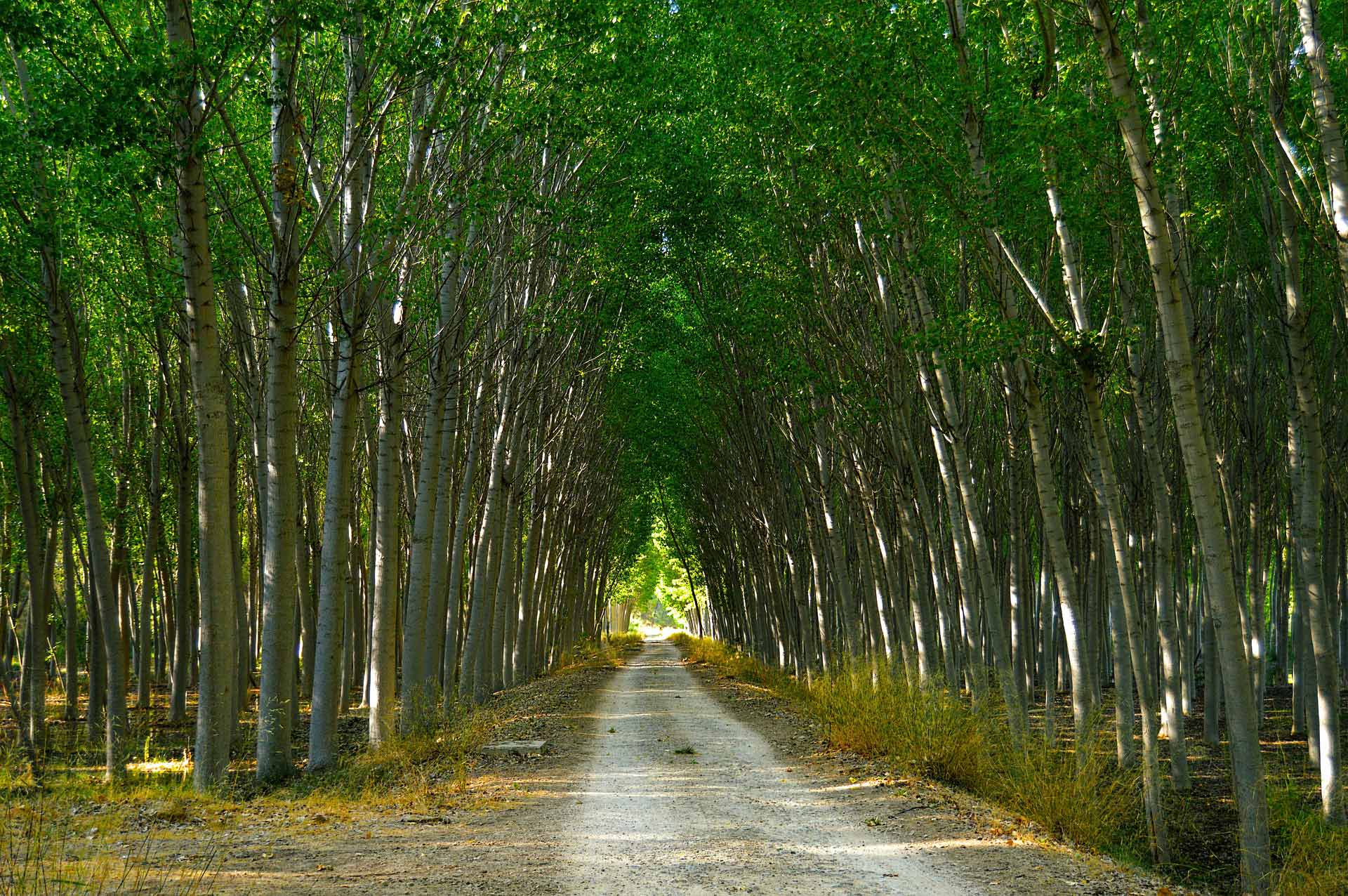
Hickory: Genus Carya Ovata
Hickory is commonly found in barns in the eastern portion of the United States and has greater density than both oak and maple. Color tones can range from light tan to deep rich brown. Hickory is considered the hardest wood based on the Janka Rating System.Due to its extreme relative hardness, milling hickory can be a challenge, as it is known to dull blades. However, because of its strength and durability, properly milled reclaimed hickory is a popular and beautiful choice for flooring.
Chestnut: Genus Castanea Dentata
Before the chestnut blight of the early 1900s, American Chestnut was extremely prevalent in the eastern part of the United States. Now considered by many to be the holy grail of reclaimed wood, antique chestnut offers unique color and often exceptionally wide planks. Before the blight, it was common to see tree trucks with diameters greater than 5 feet and overall heights greater than 50 feet. Even more sought after is wormy chestnut, which has the worm holes caused by the blight. To learn more about the history of chestnut blight, please see this article from the State University of New York's College of Environmental Science and Forestry.
A prime example of reclaimed chestnut is The Old Hill Place hand hewn log cabin built in the early 1790s that is currently in our inventory. The hand hewn logs that compose the rare and fully preserved bones of this cabin are beautiful and locally harvested chestnut from the Kentucky frontier. Read more about The Old Hill Place and its detailed history.
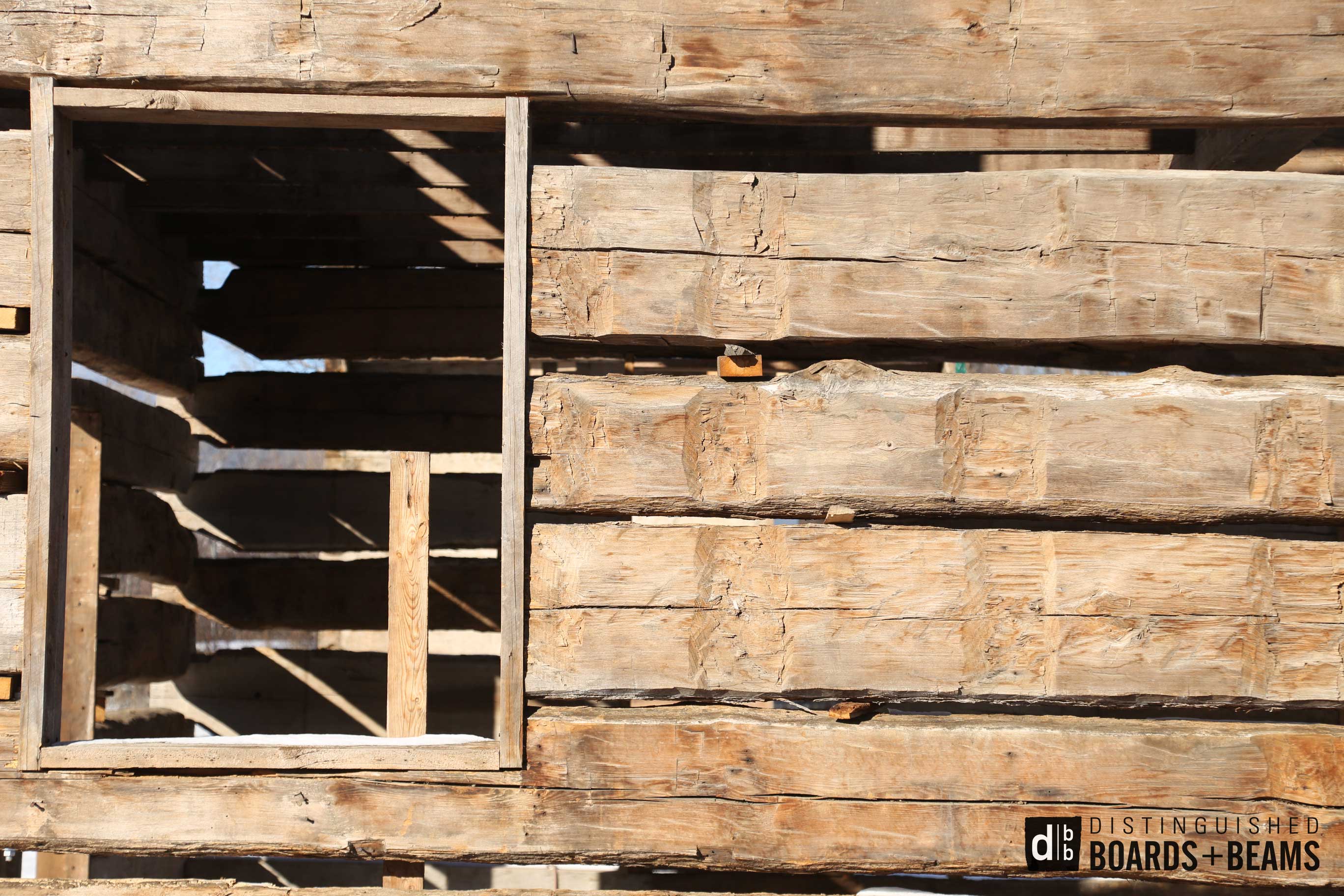
Douglas-Fir: Genus Pseudotsuga menziesii
The reclaimed Douglas fir timbers that we see today were widely used in the construction of historic barns, factories, warehouses, offices, and other commercial buildings prior to World War Two. There are two regional varieties of Douglas fir seen in historical North American architecture, coast and interior. Although very similar in properties, coast Douglas fir trees yield much larger lumber dimensions since they grow to be roughly twice as large as interior trees. In fact, coast Douglas fir is one of the world's most productive timber producing trees, accounting for one fourth of all lumber produced and used in the United States, which is more than any other species. Historically, coastal Douglas fir's size, usability, and abundance led to it becoming widely available for low prices throughout North America once rail systems became established from west to east.
Reclaimed Uses
Douglas fir is a top choice for a diverse range of projects due to its great strength to weight ratio and dimensional stability. It also holds nails, screws, bolts, plates, and joinery remarkably well. Coloration ranges from pink and yellowish orange that reddens with exposure to light. This makes reclaimed Douglas fir patinas desirable for their aged red tones and handsome, straight grain patterns with occasional spirals and waves. Popular reclaimed uses include the following:
Timbers: Professional timber-framers have come to prefer reclaimed Douglas fir for several reasons, including size, strength, usability, stability, and aesthetics. Historic timbers were harvested from pristine old growth forests, milled from the largest cream of the crop trees, and given over a century to naturally air dry. This makes them extremely stable when used in new architectural projects. Many reclaimed Douglas fir beams that remained solid for more than a century in their original architecture can be put back into load bearing situations without the risk of shrinkage and movement seen in the volatility of freshly cut material. The massive, amazingly straight timbers that we commonly stock are simply not readily available on the lumber market due to current shortages and restrictions on the harvesting of old growth Douglas fir trees. Reclaimed pieces can be greater than two feet thick and 40 feet in length. Finding newly cut material of this size is generally impossible in the modern lumber market. If someone looking for material of this size is lucky enough to find it, there will usually be months of waiting involved.
Dimensional Lumber: Reclaimed dimensional lumber (greater than 1 inch thick) is commonly made from Douglas fir. Common dimensions include 2" X 4-12", 3" X 4-13", and 4" X 6-16". This material is excellent for framing, siding, base board material and window trim for both interior and exterior applications.
Flooring: Flooring made from reclaimed Douglas fir can be an appealing options for those looking for a hardwood alternative that is durable and cost effective with beautiful, unique color variations ranging from peach to tan. Our Douglas fir flooring is milled from timbers for a variety of surface textures and profiles.
Gluelam: Beyond traditional timber framing, Douglas fir timbers can be a great substitute for glue laminated beams with the result being a much more attractive natural wood look. Additionally, Douglas Fir timbers can be used when implementing a faux rafter and gable look and also make great mantles, shelves, and counter tops.
Read more about reclaimed Douglas fir on our Dougals fir timbers page >>
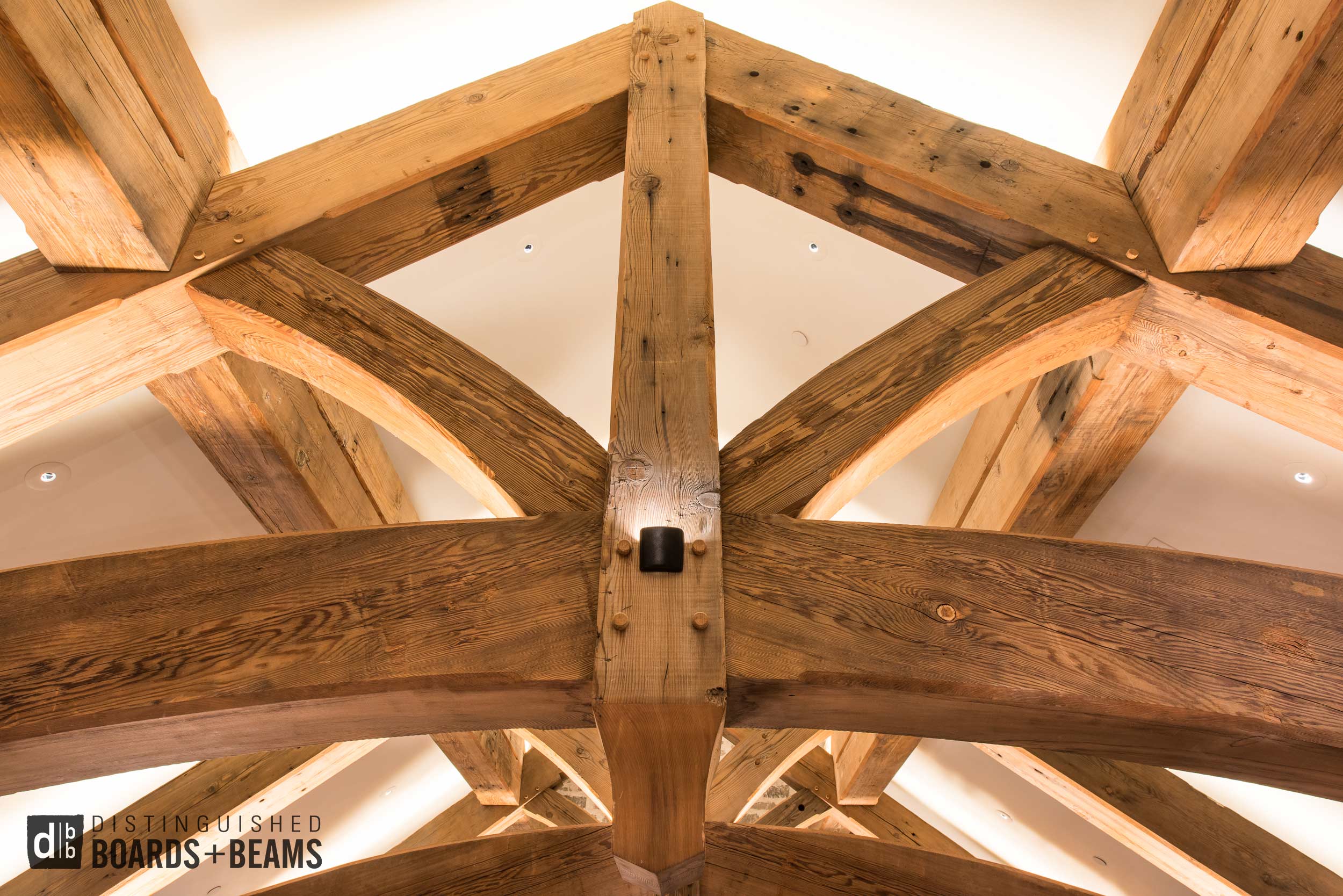
Pine: Genus Pinus
There are over 100 species of pine that vary greatly in density and hardness, thus determining their usability. Although, general softer, many pine species compare to hardwoods in terms of strength. Pine is considered one of the most economically important trees in North America, since it is used for lumber, furniture, pulp, turpentine, and more. It also has many traditional uses. Native Americans utilized the sap for waterproofing canoes and glueing feathers to arrows, the inner bark for bread-making, and the seeds as a food source. Pine species commonly used for lumber purposes grow taller than any other cone species in North America, although there is a significant difference between farmed and naturally growth pine stands. Farmed varieties are appreciated for their fast growth rates and placed in environments focused on growth rates rather than the production of the strongest lumber. Naturally, the trees grow slowly to achieve great ages and heights. 270+ foot sugar pine trees have been in North America, and the Great Basin bristlecone pine is acknowledged as the longest living tree species on earth with verified measurements of 5066 years!
Reclaimed Uses
Pine is commonly reclaimed from historic structures in the form of hand hewn timbers and beams, dimensional lumber, barn siding, and flooring:
Hand Hewn Timbers: Pine hand hewn timbers are identifiable by either their deep hewing marks or by a relatively clean hewn look. Because pine is softer, the hewing process would shave the wood clean or cut deep into the timber leaving a noticeable scar.
Dimensional Lumber: Pine dimensional lumber can be reclaimed from the interior framing of historic structures.
Barn Siding: Pine barn wood siding is very popular as it is often available in long pieces and can vary in color from unpainted weather grey to a rich and traditional red. Pine siding can be dried and milled for both internal and external uses. Because of its light weight, it installs easily. Pine barn siding is noticeably lighter in weight when compared to hardwood siding with shallower, more even weathering and furrowing.
Flooring: Pine siding and timbers can be milled in to flooring, but it is not requested as often because it is less durable compared to hardwood flooring.
Heart Pine
Heart Pine refers to the heartwood of the pine tree, which is the non-living center of the tree trunk, while the sapwood is the outer living layer which transports nutrients. Currently, heart pine for building and woodworking is procured by reclaiming old lumber and recovering logs, felled pre-1900, from rivers.
Longleaf Pine
Longleaf pine is the source of much of the available heart pine found on the U.S. market. Before the 1700s, longleaf pine forests were abundant along the coastal plain from Virginia's southern tip to eastern Texas. These trees were slow growing with a naturally long life and could obtain great height. Due to the deforestation that has occurred since the colonial period, only about 3% of the original longleaf pine forests remain. Very few new trees little have been planted although some can be found in Texas.
Once the most functional wood for construction in America, longleaf pine was used in factories and warehouses that were built during the Industrial Revolution. Taking 200 to 400 years to mature, the trees were slow-growing, tall, straight, and had a natural ability to resist mold and insects. They produce a yellow, resinous wood. The stumps and taproots of old trees become saturated with resin and resist rot. In old growth pine the heartwood of the trunk is often saturated. When boards are cut from the fat lighter wood, they are heavy and rot resistant, but quite flammable requiring care of use.

